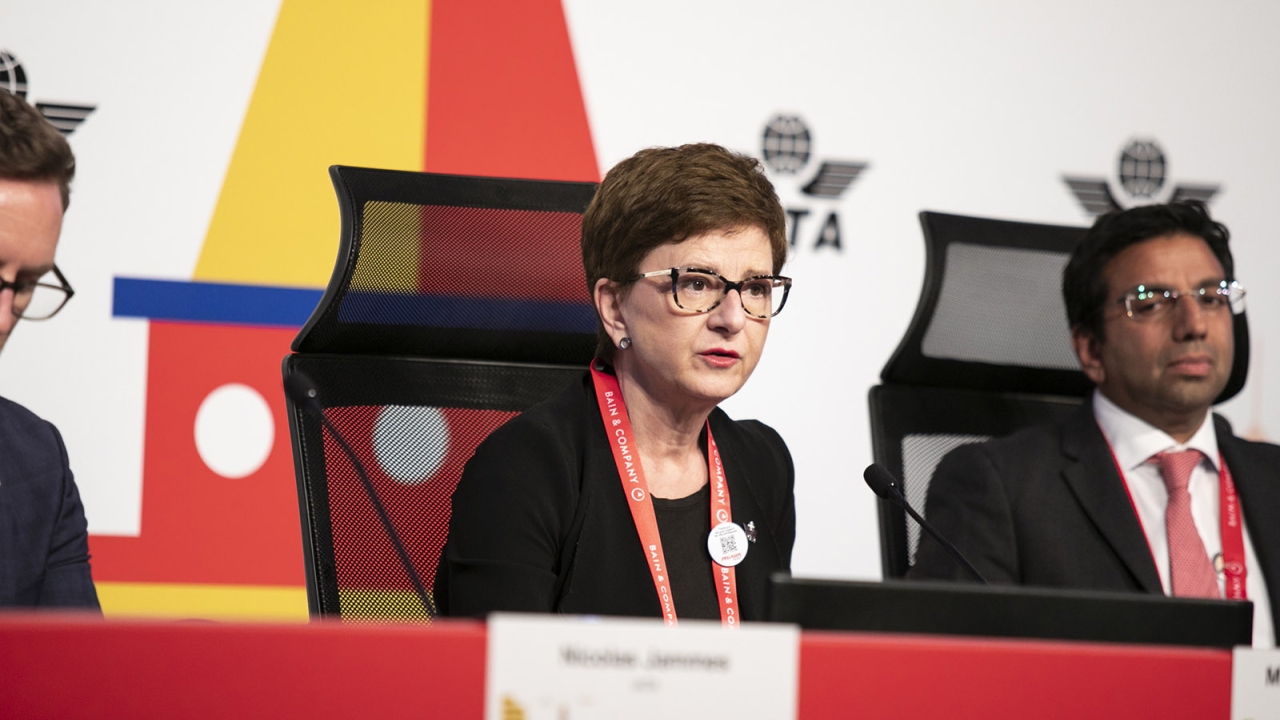IATA AGM: Roadmaps detail critical steps to achieve net zero by 2050
IATA has unveiled a series of roadmaps aimed at providing step-by-step detailing of critical actions and dependencies for aviation to achieve net zero carbon emissions by 2050.

Marie Owens Thomsen. Image: IATA
The roadmaps address aircraft technology, energy infrastructure, operations, finance, and policy considerations leading to net zero.
And Marie Owens Thomsen, SVP sustainability and chief economist, said: “We believe it is possible to achieve sustainable aviation by 2050 if we all work together. The roadmaps are the first detailed assessment of the key steps necessary to accelerate the transition to net zero by 2050.”
The roadmaps are the first detailed assessment of the key steps necessary to accelerate the transition to net zero by 2050. The roadmaps are not just for airlines. Governments, suppliers, and financiers cannot be spectators in aviation’s decarbonisation journey. The roadmaps are a call to action for all aviation's stakeholders to deliver the tools needed to make this fundamental transformation of aviation a success with policies and products fit for a net-zero world.
Highlights of each roadmap include:
- Aircraft Technology: the development of more efficient aircraft and engines. Particularly important are the steps needed to enable aircraft powered by 100% sustainable aviation fuel (SAF), hydrogen or batteries. All development milestones are backed-up by announced investment and demonstrator programmes. Also included are new engines, aerodynamics, aircraft structures, and flight systems.
- Energy and New Fuels Infrastructure: the focus is on the fuels and new energy carrier infrastructure upstream from airports needed to facilitate the use of aircraft powered by SAF or hydrogen. Renewable energy plays a vital role in meeting the aviation sector's energy demand, and the roadmap outlines milestones to enable the necessary infrastructure developments.
- Operations: the opportunities for reducing emissions and improving energy efficiency by improving the way existing aircraft are operated. Automation, big data management, and the integration of new technologies are key enablers for optimising air traffic management and enhancing the overall efficiency of the air transportation system.
- Policy: the need for globally aligned strategic policies to provide incentives and support for the aviation industry's transition to a net-zero future. As with all other successful energy transitions, collaboration between governments and industry stakeholders is crucial in creating the necessary framework to achieve the decarbonisation goals.
- Finance: how to finance the cumulative $5 trillion needed for aviation to achieve net zero by 2050. This includes technological advancements, infrastructure developments, and operational improvements.
The challenges to ramp up SAF production are a good illustration of the importance of these roadmaps. As a drop-in solution, SAF is expected to deliver about 62% of carbon mitigation needed to achieve net zero by 2050. But even though SAF is expected to be fully implementable with future aircraft fleet, it still has major inter-dependencies on policy, aircraft technology, energy infrastructure, financing, and operations for which these roadmaps are critical.
"The roadmaps show where all stakeholders should focus their efforts. There are two certainties. By 2050 we need to be at net zero carbon emissions. And the steps to get there that are outlined in these roadmaps will evolve as the industry’s expertise grows. Policy is particularly important early on as it, to a large extent, sets the scene for private sector investors to move. With that, the private sector can decarbonise at scale and with speed," said Owens Thomsen.
“Without the right policy incentives and bold investments, many of the technologies and innovations simply won’t happen at scale. Everything is related, and that is why we have the five roadmaps to tie all the parallel elements together and give our stakeholders, including governments, a complete understanding of everything that needs to happen,” said Owens Thomsen.
Owens Thomsen added: “I believe, as a European, in the free movement of people, goods, services, and capital. Together, we can achieve net zero by 2050."
Stay up to date
Subscribe to the free Times Aerospace newsletter and receive the latest content every week. We'll never share your email address.

